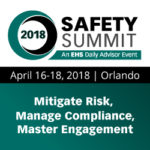Zero Accidents: 10 Steps in the Right Direction
Every safety professional’s ultimate goal is zero accidents. Here are 10 steps that can help you achieve this critical objective. Arriving at zero accidents isn’t easy, but these 10 steps will take you a good part of the way there: 1. Make sure everyone is committed to safety. Everyone in your organization, from top […]

